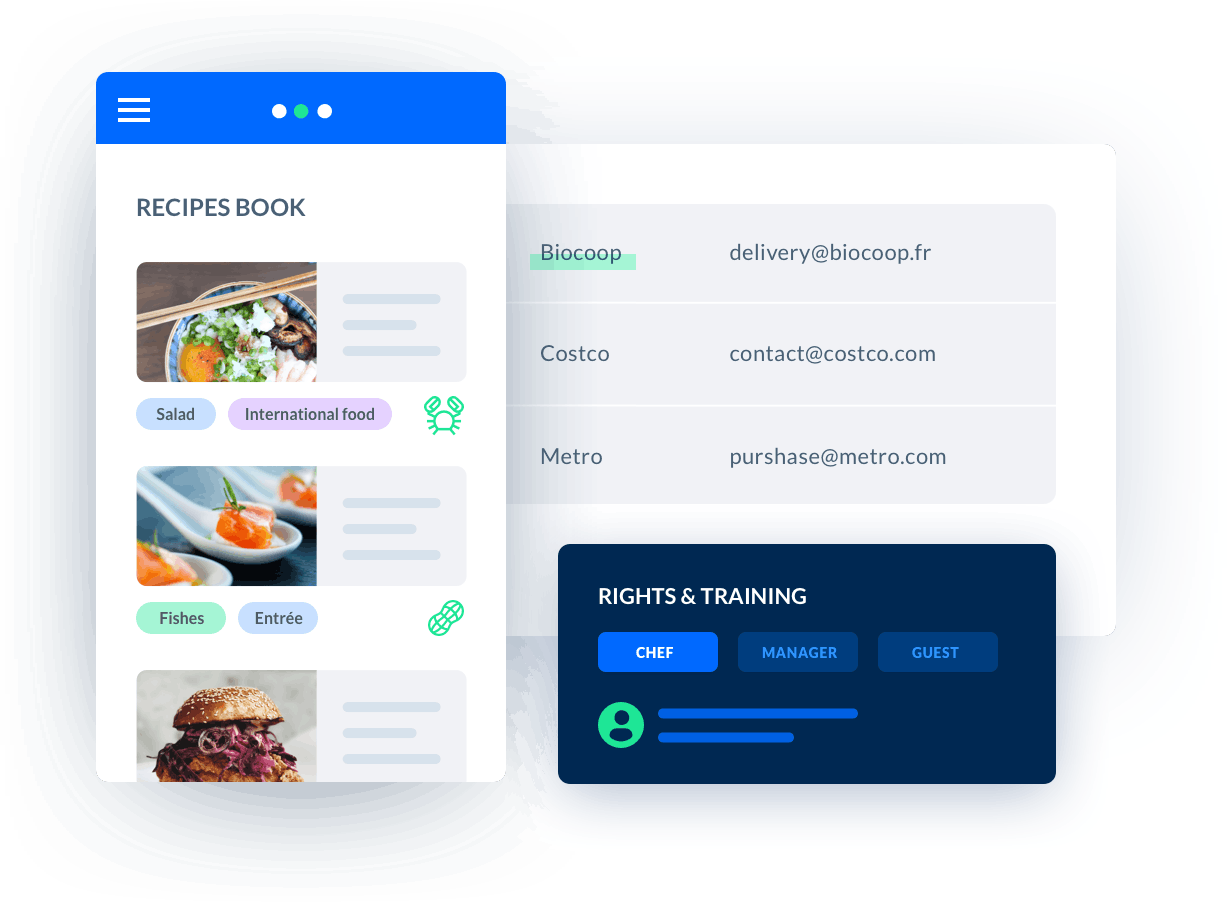what is menu engineering in food and beverage
Menu engineering is a strategic approach used in the food and beverage industry to maximize profitability and customer satisfaction by analyzing and optimizing menu items.It involves data-driven decision-making to identify the most profitable dishes, adjust pricing, and strategically position items on the menu.

Melba : Features related to menu engineering
Discover melba's features related to menu engineering

Better manage your recipe knowledge with data sheets: everything you need to know
How to better manage its knowledge recipe
Menu engineering is a strategic approach used in the food and beverage industry to maximize profitability and customer satisfaction by analyzing and optimizing menu items. It involves data-driven decision-making to identify the most profitable dishes, adjust pricing, and strategically position items on the menu. By applying menu engineering techniques, restaurants can enhance their overall performance and drive revenue growth.
The Importance of Menu Engineering
Menu engineering plays a crucial role in the success of any food and beverage establishment. By understanding customer preferences, profitability, and market trends, businesses can create menus that effectively drive sales and increase profitability. Here are some key reasons why menu engineering is essential:
1. Maximizing Profitability
Menu engineering helps identify high-profit margin items and highlights their placement on the menu. By strategically positioning these items, restaurants can encourage customers to order them, thereby increasing revenue. Furthermore, by analyzing food costs and pricing, menu engineering can help optimize profitability by adjusting prices to reflect the value offered.
2. Enhancing Customer Experience
Effective menu engineering focuses on understanding customer preferences and tailoring the menu accordingly. By analyzing customer feedback and sales data, restaurants can identify popular dishes and make them more prominent on the menu. This enhances the overall dining experience and increases customer satisfaction.
3. Streamlining Operations
Menu engineering involves evaluating the popularity and profitability of each menu item. By identifying underperforming dishes, restaurants can streamline their operations by removing or reworking them. This reduces food waste, optimizes inventory management, and improves overall operational efficiency.
Menu Engineering Strategies
When implementing menu engineering techniques, several strategies can be employed to optimize menu performance. These strategies include:
1. The Star-Plow-Horse Model
The Star-Plow-Horse model is a popular approach in menu engineering that categorizes menu items into three groups based on their popularity and profitability:
- Stars: These are high-profit and high-popularity items that are considered the restaurant's signature dishes. They should be prominently featured on the menu and supported by eye-catching descriptions or visuals.
- Plowhorses: These items are popular but have a lower profit margin compared to the star items. They should be positioned strategically to encourage customers to choose higher-profit items.
- Horses: These items have low popularity and low profitability. They may be removed or reworked to improve overall menu performance.
2. Menu Item Placement
The placement of menu items can significantly impact customer ordering behavior. Restaurants can strategically position high-profit items in areas where customers' eyes naturally gravitate, such as the top right corner of a menu page or in dedicated sections. Bold typography or visual cues can also be used to draw attention to specific items.
3. Menu Item Descriptions
Well-crafted and enticing menu item descriptions can influence customer choices. By using descriptive language, highlighting unique ingredients, and incorporating sensory words, restaurants can make their dishes more appealing. Additionally, emphasizing the culinary expertise behind the preparation can enhance the perceived value of the item.
Implementation and Analysis
To effectively implement menu engineering, data analysis is essential. Here are some steps involved in the implementation and analysis process:
1. Collect Data
Restaurants should collect data on sales, customer preferences, and costs associated with each menu item. This data can be obtained through point-of-sale systems, customer feedback forms, or surveys. The more detailed and accurate the data, the better the insights for menu optimization.
2. Categorize Menu Items
Using the Star-Plow-Horse model or a similar approach, categorize each menu item based on its popularity and profitability. This categorization helps identify which items need adjustments and which ones should be highlighted.
3. Analyze Performance
By analyzing the data collected, assess the performance of each menu item and category. Identify underperforming items, consider their potential for improvement, and evaluate the impact of price adjustments on profitability.
4. Optimize Menu Design
Based on the analysis, make strategic changes to the menu design. Consider adjusting prices, repositioning items, and updating descriptions to enhance profitability and customer appeal.
5. Monitor and Adjust
Menu engineering is an ongoing process. Continuously monitor the performance of menu items and make adjustments as needed. Keep track of customer feedback and market trends to ensure the menu remains relevant and appealing.
In Conclusion
Menu engineering is a data-driven approach that enables food and beverage establishments to maximize profitability, enhance customer experience, and streamline operations. By analyzing sales data, categorizing menu items, and strategically adjusting pricing and placement, restaurants can optimize their menus for increased revenue and customer satisfaction. Implementing menu engineering techniques requires careful analysis, ongoing monitoring, and a focus on delivering exceptional dining experiences.






